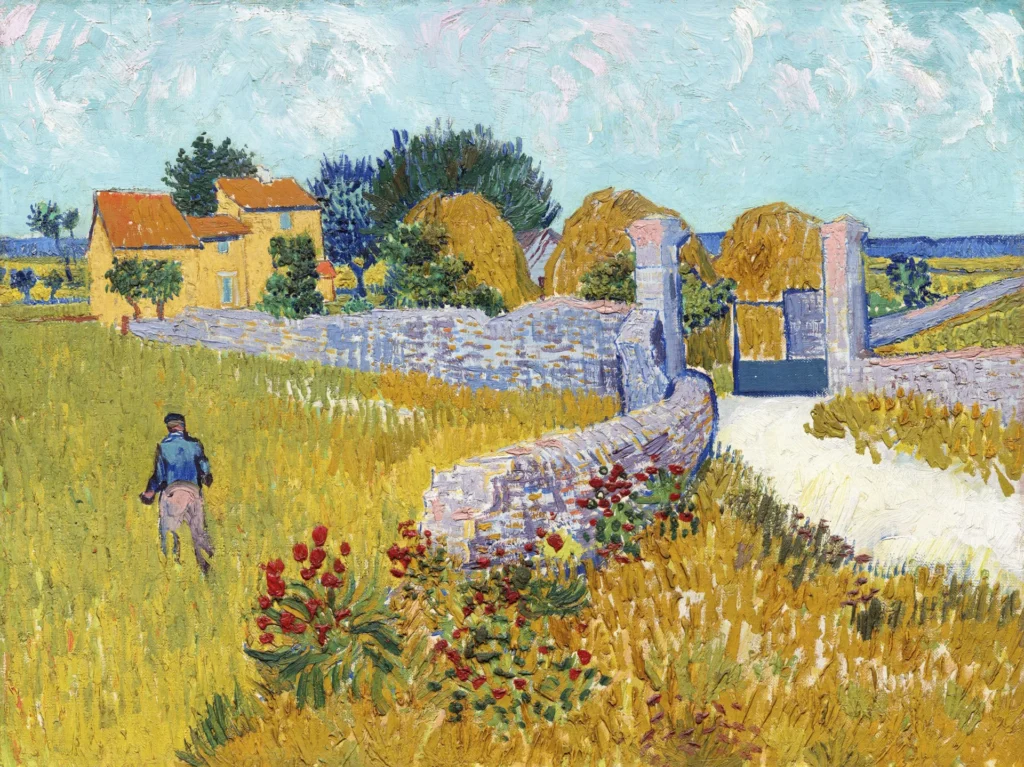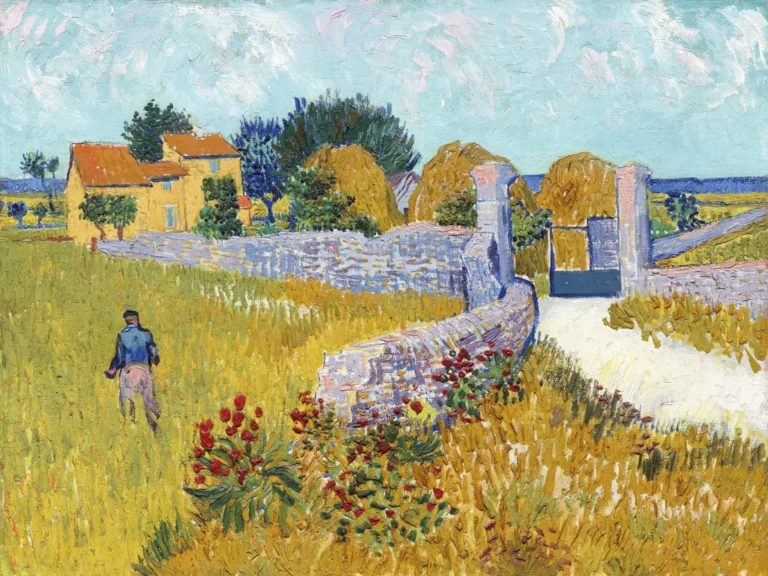Farmhouse In Provence (1888)
Vincent van Gogh's Farmhouse in Provence offers a vivid portrayal of the French countryside, filled with vibrant hues and an enchanting atmosphere. Painted in Arles during the summer of 1888, this artwork beautifully captures the essence of Provence's light and landscape, emblematic of Van Gogh's style during one of his most productive periods. The use of complementary colors brings an extraordinary vibrancy to the scene, inviting viewers into a dynamic representation of rural life.
Year 1888
About the Artwork
Created during Van Gogh's transformative year in Arles, Farmhouse in Provence symbolizes his artistic evolution influenced by the brilliant southern French landscape. Drawn to the region by its incredible light and colors, Van Gogh produced over 200 artworks during his stay, making it a pivotal time in his career. The painting embodies his admiration for fellow artist Adolphe Monticelli, who inspired Van Gogh's expressive use of color. The painting now resides in the National Gallery of Art, continuing to be celebrated for its innovative approach.
Creation and Location
Van Gogh painted this work in Arles, Provence, France, a region he moved to in February 1888, attracted by the brilliant light and vibrant colors of the area, which he likened to "the Japan of the South".
Inspiration
The move to Provence was partially inspired by the painter Adolphe Monticelli, whose use of color and heavy application of paint Van Gogh admired. Van Gogh felt a strong kinship with Monticelli, even referring to himself as "Monticelli's son or his brother" in a letter.
Did You Know
Liked what you see? Add it to your collection.
Enjoyed reading? Share it.
... continued
Artistic Techniques
The painting is characterized by the use of complementary colors, a technique that enhances the luminosity and intensity of the colors. Van Gogh employed three pairs of complementary colors: orange and blue, red and green of the plants, and pink clouds against a turquoise sky. This use of complementary colors was influenced by the scientific research on color contrast, which Van Gogh and other impressionists like Camille Pissarro utilized to create vibrant effects.
Productivity and Style
During his time in Arles, Van Gogh was incredibly productive, creating over 200 paintings, about 100 drawings, and writing more than 200 letters in just 444 days. His works from this period reflect the influence of Japanese woodblock prints, with simplified forms and flat patterns.
Provenance
The painting is now part of the collection at the National Gallery of Art in Washington, D.C., as part of the Ailsa Mellon Bruce Collection.
Dimensions and Medium
The painting is an oil on canvas work, measuring 46.1 cm × 60.9 cm (18.1 in × 24.0 in).










